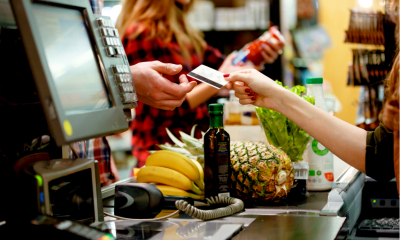
The way VAT-registered businesses must keep their VAT records and file their returns has changed under Making Tax Digital (MTD). Here's what you need to know
1. You can't do your VAT bookkeeping on paper anymore
Maintaining paper records no longer meets the tax legal requirements. All VAT-registered businesses must now use MTD-compatible accounting software to keep their financial records. This software "talks" to HMRC so businesses can file their VAT returns at the touch of a button.
2. MTD applies to all businesses regardless of turnover
Since April 2022, all VAT-registered businesses, regardless of the threshold have been required to follow the MTD rules. There are very few exemptions from the MTD for VAT rules including those for whom it is not reasonable or practical to use computers, software or the internet. Making Tax Digital will gradually be extended to cover income tax and corporation tax.
3. The VAT information you have to submit to HMRC did not change
Under Making Tax Digital you keep the same kind of records that you always did. This includes:
- The value of all sales you make, excluding VAT;
- Details of all your purchases (exc. VAT);
- The rate of VAT charged on each sale and purchase;
- The date of all transactions;
- The name and principle address of your business;
- Your VAT registration number;
- Details of any VAT accounting schemes you use.
4. You can keep using spreadsheets but using appropriate software is simpler
HMRC has said that businesses can continue to use spreadsheets but they must use special bridging software to transfer the data. Businesses are advised to keep all of their financial records in a digital format instead - making the move to appropriate software as soon as possible.
5. You'll need to choose the right accounting software to do your VAT return
The software or app that you use to do all your VAT accounts and filing must be compatible with Making Tax Digital. The software must be able to link to HMRC via an Application Programming Interface (API).
You can check the list of software providers on the HMRC website to see which are compatible. Most software providers are charging on a subscription basis - typical costs are between £10 and £30 a month.
6. The VAT deadlines haven't changed
Filing and payment deadlines for VAT have not changed. In time, however, HMRC is working towards a "real-time" system where taxpayers will be able to see their current tax liabilities at all times and keep up with payments on a pay-as-you-go basis.
7. The VAT rules aren't changing for everyone
The government has said that some "digitally-excluded" groups will not have to comply with Making Tax Digital. These include practicing members of a religious society whose beliefs are incompatible with the requirements of the regulations and anyone for whom it is not "reasonably practicable" for them to use digital tools for reasons of age, disability, remoteness of location or for any other reason.
Those businesses that are subject to an insolvency procedure are also be excluded. If any of these conditions apply, then you'll need to call the HMRC helpline to make other arrangements for filing your VAT return.
8. Some businesses had longer to get ready for MTD for VAT
VAT-registered businesses with "complex requirements" did not have to comply until 1 October 2019. However, most VAT registered businesses must now follow the rules for Making Tax Digital for VAT.
9. You need to officially sign up for Making Tax Digital with HMRC
It's up to business owners to sign up on the HMRC website. You'll need your Government Gateway user ID and password and your VAT registration number. Your accountant can file your VAT return for you, providing they are signed up to act on your behalf as your agent.


